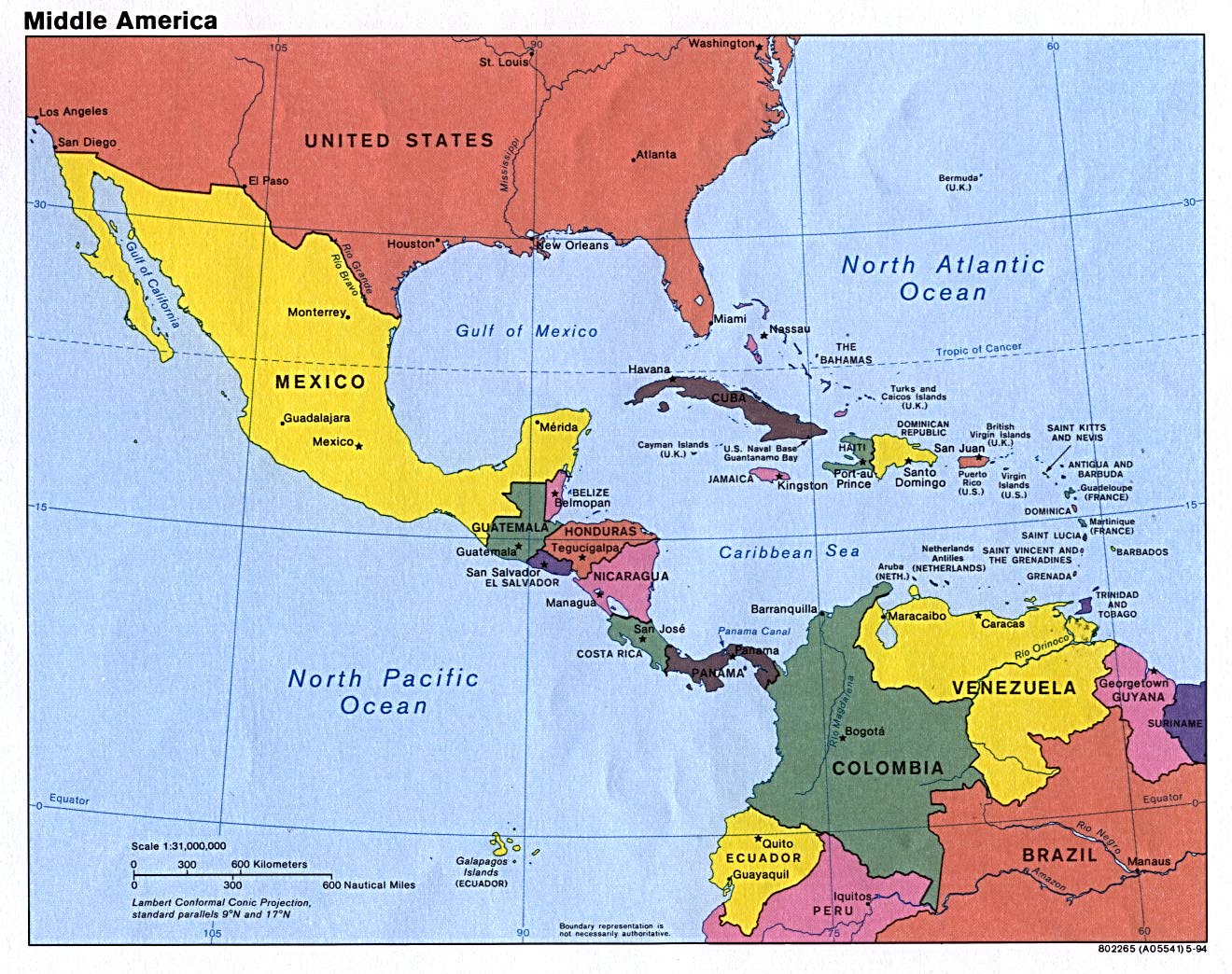Chapter 5: Middle America
Identifying the Boundaries
Middle America, the geographic realm between the United States and the continent of South America, consists of three main regions: the Caribbean, Mexico, and the Central American republics. The Caribbean region, the most culturally diverse of the three, consists of more than seven thousand islands that stretch from the Bahamas to Barbados. The four largest islands of the Caribbean make up the Greater Antilles, which include Cuba, Jamaica, Hispaniola, and Puerto Rico. Hispaniola is split between Haiti in the west and the Dominican Republic in the east. The smaller islands, extending all the way to South America, make up the Lesser Antilles. The island that is farthest south is Trinidad, just off the coast of Venezuela. The Bahamas, the closest islands to the US mainland, are located in the Atlantic Ocean but are associated with the Caribbean region. The Caribbean region is surrounded by bodies of salt water: the Caribbean Sea in the center, the Gulf of Mexico to the west, and the North Atlantic to the east.
Central America refers to the seven states south of Mexico: Belize, Guatemala, Honduras, El Salvador, Nicaragua, Costa Rica, and Panama. Panama borders the South American country of Colombia. During the colonial era, Panama was included in the part of South America controlled by the Spanish. The Pacific Ocean borders Central America to the west, and the Caribbean Sea borders these countries to the east. While most of the republics have both a Caribbean and a Pacific coastline, Belize has only a Caribbean coast, and El Salvador has only a Pacific coast.
Figure 5.1 Middle America: Caribbean, Mexico, and Central America
Central America includes the countries south of Mexico through Panama.
Map courtesy of University of Texas Libraries
Mexico, the largest country in Middle America, is often studied separately from the Caribbean or Central America. Mexico has an extensive land border with the United States, its neighbor to the north. The Baja Peninsula, the first of Mexico’s two noted peninsulas, borders California and the Pacific Ocean and extends southward from California for 775 miles. The Baja region is mainly a sparsely populated desert area. The Yucatán Peninsula borders Guatemala and Belize and extends north into the Gulf of Mexico. The Yucatán was a part of the ancient Mayan civilization and is still home to many Maya people.
Middle America is not a unified realm but is characterized by a high level of political and cultural diversity. A diverse mix of people—with AmerindianEthnicity of people whose ancestors are native to the Americas. (people native to the Americas), African, European, and Asian ethnic backgrounds—make up the cultural framework. This realm is often associated with the term “Latin America” because of the dominance of colonialism from European countries like Spain, France, and Portugal speaking a Latin-based language. The truth is that Latin is not an active language, and Middle America has created its own cultural identity in spite of the impact of colonialism, and the realm can be defined by its people and their activities as much as by its physical environment.


